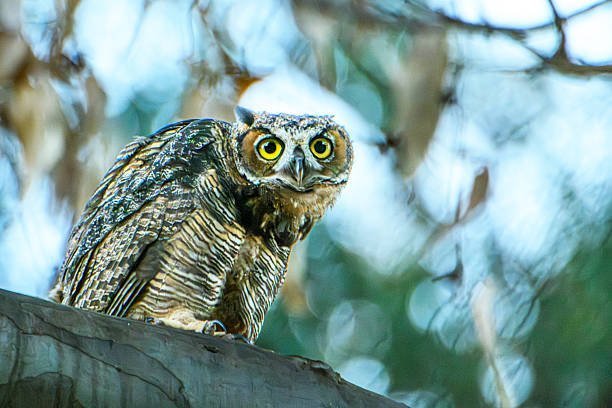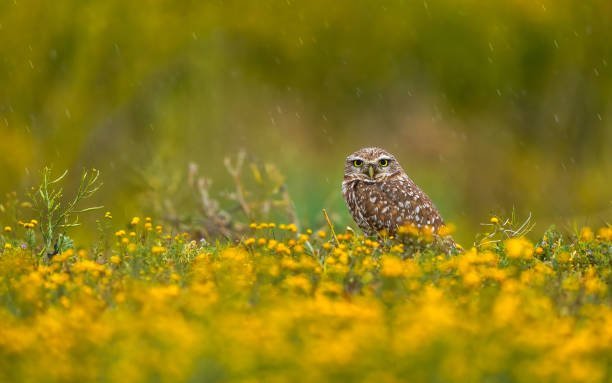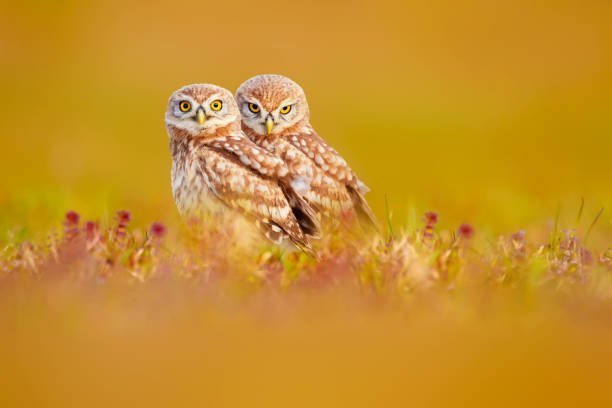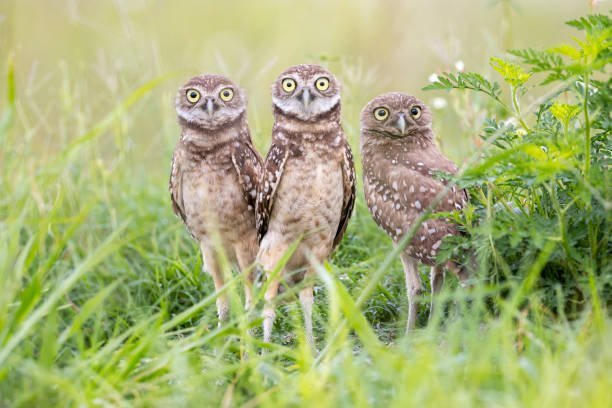Why do baby owls often require specialized care during the rescue process?

Introduction:
In this article, I’ll delve into the intriguing world of baby owls and explore the compelling reasons behind the necessity for specialized care during their rescue process. Owls, renowned for their enigmatic nocturnal existence and exceptional hunting skills, captivate the imagination of many. However, the vulnerability of baby owls in the wild calls for a unique approach when it comes to their rescue and rehabilitation. Unlike some other species, baby owls are born altricial, meaning they are helpless and entirely dependent on their parents for sustenance and protection.
This dependency, coupled with the specific dietary requirements and behavioral traits of owl nestlings, makes their rehabilitation a complex and delicate task. To fully understand why baby owls require specialized care during the rescue process, we will uncover the distinctive features of owl nestlings, the challenges they face in the wild, and the critical role that human intervention plays in their survival and eventual return to their natural habitat.
Because baby owls are altricial:
Baby owls, like many other bird species, are considered altricial, a term used to describe hatchlings that are born in a relatively undeveloped state compared to precocial species. When owlets emerge from their eggs, they are extremely underdeveloped, with closed eyes and ear canals. Their underdeveloped physical condition leaves them highly vulnerable, unable to move or regulate their body temperature effectively. This vulnerability sets the stage for the need for specialized care during their rescue and rehabilitation. Altriciality in owls is a result of their unique reproductive strategy, which prioritizes producing fewer offspring with a greater investment in each individual’s growth and development.
The altricial nature of baby owls presents a significant challenge for their caretakers. Unlike precocial species that can soon explore their environment and feed themselves shortly after hatching, baby owls are entirely reliant on their parents for the essentials of life. This reliance extends to not only obtaining food but also staying warm, as owlets are unable to regulate their body temperature efficiently in the early days of their lives. Consequently, providing the appropriate care to mimic the parents’ role in ensuring the owlet’s survival becomes a crucial component of specialized care during the rescue process.
To address the vulnerability stemming from their altricial nature, caretakers must ensure a controlled and nurturing environment. This environment should offer the warmth, protection, and nourishment that baby owls need to thrive. Baby owls are incredibly delicate at this stage, making them susceptible to injury, illness, and stress. Specialized care is required to meet their specific developmental needs, which extend beyond mere survival to ensure their eventual return to the wild.
Because they lack feathers and mobility:
Another factor that necessitates specialized care for baby owls during the rescue process is their complete lack of feathers and mobility upon hatching. When baby owls hatch, they emerge from their eggs as naked, blind, and nearly immobile creatures. Their vulnerability is exacerbated by the absence of protective feathers, which are crucial for maintaining body temperature and providing camouflage and protection from predators. As they cannot move effectively, baby owls are reliant on their parents for not only feeding but also for warmth, protection, and grooming.
The absence of feathers in young owls is a critical issue that specialized caregivers must address. Feathers play a vital role in an owl’s life, serving multiple functions such as insulation, camouflage, and, for some species, silent flight. Without feathers, baby owls are highly susceptible to temperature fluctuations, which can lead to hypothermia and other health issues. They are also ill-equipped to fend off predators or escape from danger.
In specialized care settings, providing a warm and controlled environment is essential. This involves maintaining appropriate temperatures to mimic the mother owl’s brooding and keeping the young owlets sheltered from potential threats. Furthermore, caregivers need to monitor and ensure proper feather development as the baby owls grow, as the appearance of feathers is a significant milestone in their development. This care is fundamental in preparing them for eventual independence and life in the wild.
Because they are entirely dependent on parents:
Baby owls’ dependence on their parents is a fundamental aspect of their early life. In the wild, adult owls play a crucial role in providing nourishment, warmth, and protection to their offspring. Baby owls rely entirely on their parents for food, and the parents are responsible for capturing prey, regurgitating it for the young, and teaching them essential hunting skills.
When owls are orphaned or require rescue due to injuries or other factors, the absence of parental care becomes a significant challenge. This dependency on parental care emphasizes the need for specialized human intervention. Caregivers must replicate the role of owl parents by providing the necessary nourishment, warmth, and protection to ensure the survival and well-being of the young owls.
In specialized care settings, this means meticulously researching the dietary preferences of the owl species in question and creating a suitable diet plan. It also involves monitoring and providing consistent care to mimic the natural parenting process, ensuring that the young owls receive the nourishment and attention required for their growth and development.
Because they have specific dietary needs:
The dietary requirements of baby owls further emphasize the need for specialized care during the rescue process. Owls are carnivorous birds of prey, and their diets primarily consist of small mammals, birds, and other creatures. While adult owls are skilled hunters, baby owls lack the ability to capture and consume their prey effectively, relying solely on their parents for sustenance.
In specialized care environments, understanding the specific dietary needs of baby owls is essential. Caretakers must provide a diet that replicates the natural prey items that owl parents would deliver. This often includes offering a variety of small mammals, insects, and sometimes even small birds, depending on the owl species. In some cases, nutritional supplements may be necessary to ensure that the owlets receive all the essential nutrients they need for healthy growth.
Failure to meet the dietary needs of baby owls can result in malnutrition, developmental issues, and poor overall health. Specialized care involves careful monitoring of the owlets’ nutritional intake, adjusting their diet as they grow, and ensuring that they receive the appropriate balance of protein, fat, and vitamins essential for their well-being.
Because they are vulnerable in the wild:
Baby owls, even with parental care, face a range of dangers in the wild. They are vulnerable to predation, harsh weather conditions, and accidents. The risks increase when they are separated from their parents due to injury, abandonment, or other reasons. Specialized care is necessary to protect them from these threats and increase their chances of survival.
In the wild, baby owls are often preyed upon by larger birds, mammals, and even snakes. Their lack of mobility and limited defensive capabilities make them easy targets. Furthermore, severe weather conditions, such as heavy rain, cold temperatures, or extreme heat, can pose significant risks to their survival. Without the shelter and warmth provided by their parents, they are more susceptible to these environmental challenges.
In specialized care, creating a safe and controlled environment is crucial. Caregivers need to protect the owlets from potential predators, harsh weather, and other hazards that could endanger their lives. This involves providing suitable enclosures or nest boxes, implementing security measures, and ensuring that the young owls are shielded from extreme weather conditions.
Because they may require medical attention:
Baby owls, like any young creatures, can face health issues that require medical intervention. In the wild, injuries, infections, or other health concerns can be detrimental to their survival. When baby owls are found injured, orphaned, or in distress, specialized care becomes essential to address their medical needs.
In a rescue and rehabilitation setting, caretakers must be trained and equipped to assess and provide medical care to baby owls. This includes diagnosing and treating injuries, infections, and illnesses. Common issues may include broken bones, parasites, or respiratory infections. Timely and appropriate medical attention is critical to ensure the health and well-being of the owlets.
Additionally, some baby owls may require specialized care due to congenital conditions or deformities. In these cases, experienced rehabilitators can work to address these unique challenges and provide the necessary support to help the owlets thrive.
Because they need to learn hunting skills:
As owls grow, they need to acquire essential hunting skills to become self-sufficient predators. These skills are typically taught and honed by their parents in the wild. However, orphaned or rescued baby owls may miss out on this critical aspect of their development. Specialized care, therefore, must include efforts to teach young owls how to hunt and fend for themselves.
In a controlled environment, caregivers may introduce live prey items or simulate hunting scenarios to help owlets develop their hunting instincts and techniques. This process is essential for their eventual release into the wild, where they will need these skills to survive.
Training baby owls to hunt is a delicate and time-consuming process that requires expertise and patience. The goal is to ensure that the young owls are not only capable of catching prey but also have the confidence and skills necessary to thrive independently.
Because human intervention aids survival:
Ultimately, specialized care during the rescue process is a critical factor in the survival of baby owls. While the challenges of rehabilitating these altricial, featherless, and entirely dependent young birds are significant, human intervention plays a vital role in mitigating these challenges and increasing their chances of returning to the wild successfully.
Specialized caregivers, often working in wildlife rehabilitation centers or under the guidance of experienced rehabilitators, provide the essential care, nourishment, medical attention, and training that baby owls need to grow, develop, and acquire the skills required for life in their natural habitat. These efforts aim to mimic the role of owl parents, offering a nurturing environment and support systems that enable the owlets to thrive despite their vulnerabilities.
Conclusion:
I hope this exploration of why baby owls often require specialized care during the rescue process has shed light on the intricate challenges faced by these young avian predators. Throughout this discussion, we’ve uncovered the vulnerabilities arising from their altricial nature, lack of feathers, and complete dependence on their parents. Their specific dietary needs, the hazards they encounter in the wild, potential health concerns, the necessity of learning hunting skills, and the crucial role of human intervention have all been highlighted.
In conclusion, the specialized care provided by dedicated caregivers and wildlife rehabilitators is instrumental in mitigating these challenges and safeguarding the future of baby owls. Their commitment to replicating the role of owl parents, providing a nurturing environment, and offering essential support systems ensures the well-being and successful rehabilitation of these remarkable birds of prey. By recognizing the unique requirements of baby owls and embracing the responsibilities that come with their rescue and care, we contribute to the preservation of these enigmatic and awe-inspiring creatures, promoting their eventual return to the wild where they rightfully belong.










Post Comment